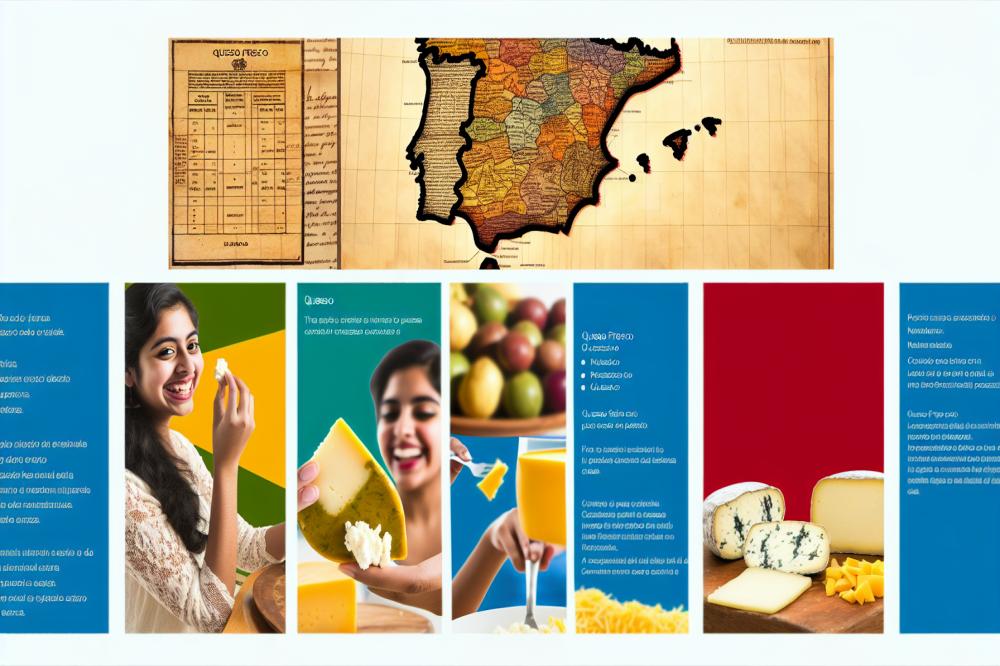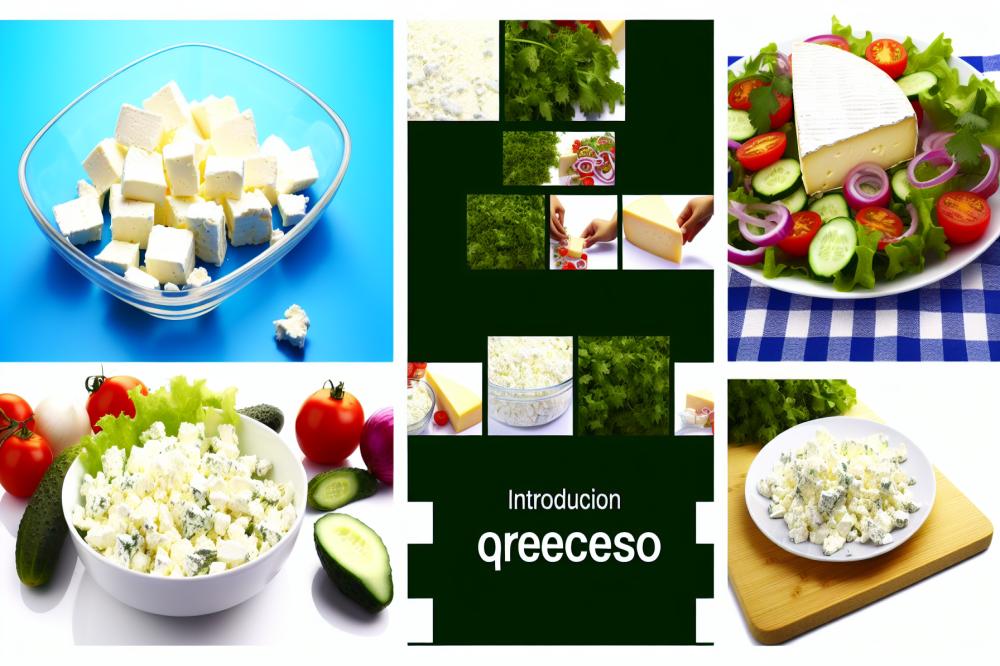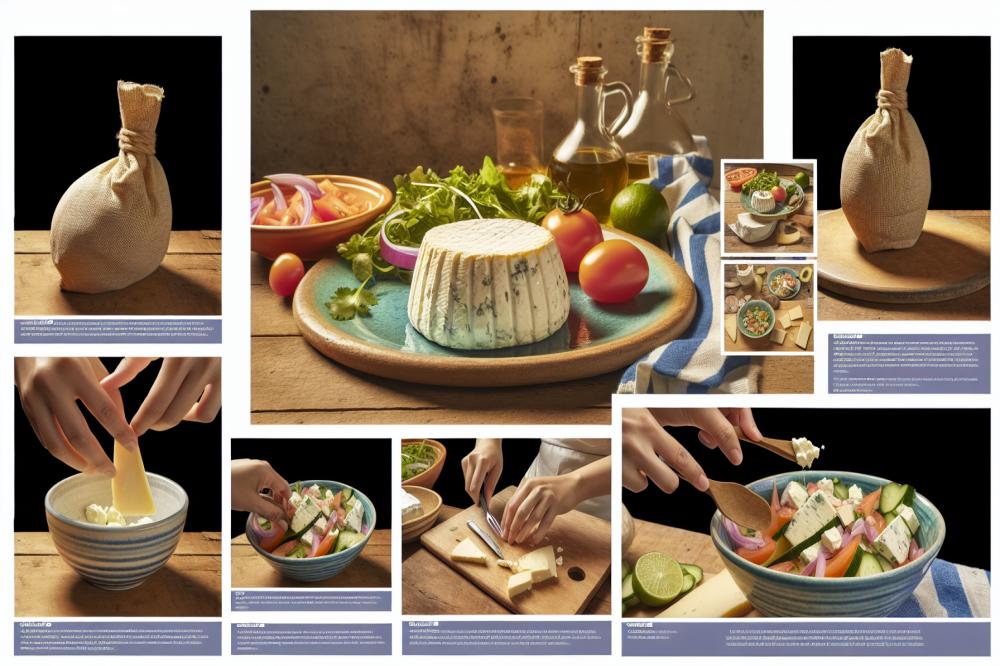Overview of cheeseofchoice.org/queso-de-valdeon-a-blue-cheese-gem-from-leon”>Queso Fresco
In the vibrant world of Fresh Spanish cheeses, one stands out for its flavor and versatility: Queso Fresco. This cheese is a staple in many Spanish households and restaurants. It has a soft, crumbly texture and a mild, creamy taste. Often enjoyed on its own or as a complement to various dishes, it brings a refreshing element to various meals. Its significance goes beyond mere taste; it represents a rich cultural heritage.
The history of Queso Fresco is entwined with the traditions of Spain itself. Originally made by shepherds, this cheese dates back to rural areas, where it was a practical way to preserve milk. Over time, its popularity spread to cities and regions, becoming a beloved ingredient in many recipes. Its production methods vary depending on the region, leading to subtle differences in taste and texture.
Regions throughout Spain take pride in their unique adaptations of this cheese. In the northern areas, it can be more crumbly, while in the south, it tends to be creamier and richer. Many people enjoy using it in salads, tacos, or simply served with bread. Each area not only contributes to the flavor profiles but also to the cheese-making techniques that have been passed down through generations. Through this delightful cheese, the essence of Spanish culinary traditions comes alive.
Fresh Spanish cheeses

Spain is home to a variety of fresh cheeses. Each region contributes its own flavors and textures. Not all of these cheeses are widely known, but each has a special place in Spanish cuisine. The soft and creamy texture makes fresh cheeses delightful. They can be enjoyed on their own, within dishes, or as ingredients to elevate meals.
Comparison of Queso Fresco with Other Spanish Cheeses
While Queso Fresco has gained popularity, other fresh cheeses also deserve attention. For instance, Queso Blanco is another fresh cheese that shares similarities. This cheese is slightly firmer and has a milder flavor. Unlike Queso Fresco, it does not crumble quite as much. Furthermore, there is also younger Manchego, which brings a different taste experience. It offers a slightly nutty flavor, contrasting the freshness of Queso Fresco.
Regional Specialties and Production Methods
In Spain, cheese-making varies greatly by region. In regions like Andalucía, Queso Fresco is made from cow’s milk. The production method includes a quick curdling process. This process highlights the freshness of the milk. Meanwhile, in Galicia, cheeses like Queso de Tetilla showcase local traditions. The unique shape of the cheese tells a story of its origins. Traditional methods often involve the use of specific rennet types. Each region’s climate and environment also shape the final product.
Cultural Significance and Culinary Uses in Traditional Dishes
Fresh cheeses hold deep cultural value in Spanish society. They are often enjoyed at family gatherings and festive occasions. Cheese plays a central role in many beloved dishes, like tapas. Queso Fresco adds a creamy element to salads and salsas. Additionally, it is used in traditional recipes like empanadas or enchiladas. The versatility makes it a household favorite. People in Spain appreciate these cheeses not just for their taste, but for their connection to family and heritage. Each bite connects individuals to traditions that span generations.
Recipe: Queso Fresco Salad

This salad showcases the light and refreshing qualities of fresh cheese. It’s perfect for a warm day or as a side dish at any meal. The ingredients are easy to find and combine well together.
Ingredients
- 1 cup crumbled fresh cheese
- 2 cups mixed greens
- 1 cup cherry tomatoes, halved
- 1/2 cup diced cucumber
- 1/4 cup thinly sliced red onion
- 1/4 cup chopped fresh cilantro
- Juice of 1 lime
- 2 tablespoons olive oil
- Salt and pepper to taste
Instructions
Begin by placing mixed greens, cherry tomatoes, diced cucumber, red onion, and cilantro in a large bowl. The colors will be vibrant and inviting.
Next, grab a small bowl and whisk together the lime juice, olive oil, salt, and pepper. This dressing will add a zesty kick to the salad.
Drizzle the dressing over the salad ingredients and toss gently. Make sure everything is evenly coated for the best flavor.
Finally, sprinkle crumbled cheese on top right before serving. Enjoy the salad fresh, allowing the flavors to mix beautifully.
Nutritional Information and Health Benefits

Nutritional profile of Queso Fresco
Queso Fresco is a fresh cheese popular in many Spanish and Latin dishes. Each ounce typically contains about 70 calories. It has approximately 6 grams of protein, making it a decent source for muscle repair and growth. This cheese is relatively low in fat, with around 5 grams per serving. Additionally, Queso Fresco provides calcium, an important mineral for bone health. It also has vitamins A and B12, which contribute to overall well-being. The sodium content can be on the higher side, so it’s good to watch out for that.
Health benefits of consuming fresh cheeses
Eating fresh cheeses comes with benefits. They are often easier to digest than aged cheeses. This can be particularly helpful for those who are lactose intolerant. Fresh cheese tends to contain more moisture, which can aid hydration. The protein found in these cheeses supports weight management and keeps hunger at bay. High-quality fats in cheese contribute to heart health when consumed in moderation.
Role of Queso Fresco in a balanced diet and low-calorie options
Including this cheese in meals can help balance nutritional intake. It adds flavor without significantly raising calorie consumption. Many use it to enhance salads, tacos, and rice dishes. Substituting high-calorie dressings or sauces with this cheese can lower overall calorie counts. Pairing it with fruits or vegetables creates a nutrient-dense option. The cheese fits well into a balanced diet as long as portion control is maintained. Fresh cheese can be a delightful way to add taste while making healthy choices.
Final Thoughts on Queso Fresco and Its Cultural Significance

The importance of queso fresco extends beyond its delicious flavor. This fresh cheese plays a significant role in Spanish cuisine and reflects the rich cultural heritage of Spain. Traditionally made from cow’s milk, it carries with it a long history shaped by the land and its people. Each bite offers a glimpse into the culinary practices that have been passed down through generations.
Many enjoy this cheese in a variety of dishes. Salads, tacos, and even desserts can be elevated with its soft, crumbly texture. It adds a refreshing taste that enhances any meal. Exploring different ways to incorporate it into everyday cooking can transform simple recipes into something special.
For those feeling adventurous, consider trying a homemade salad featuring this fresh cheese. Combining it with ripe avocados, juicy tomatoes, and a sprinkle of cilantro creates a colorful and healthy option. This dish not only pleases the palate but also encourages a connection to the traditions and flavors of Spain.
In summary, embracing the diverse flavors of fresh cheeses can enrich your culinary experiences. Take the time to appreciate both the cheese itself and the cultural stories it tells. You might discover a new favorite dish or gain a deeper understanding of Spanish cuisine. So, gather your ingredients and enjoy the process of making that delicious salad at home!



